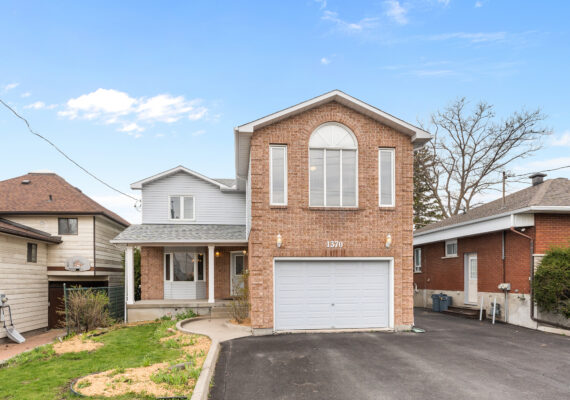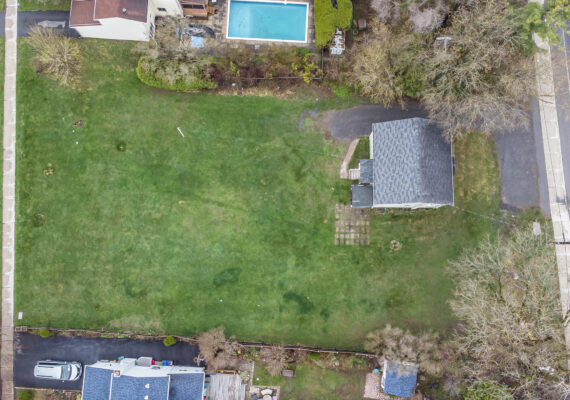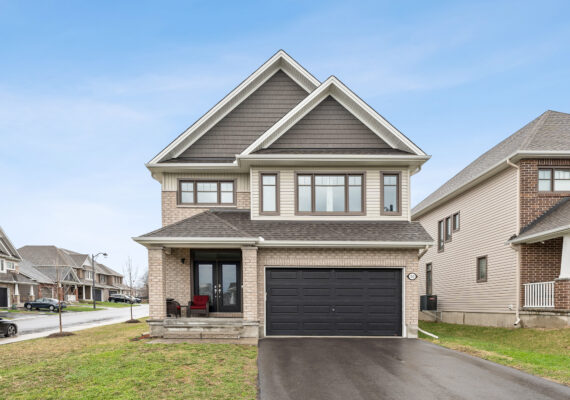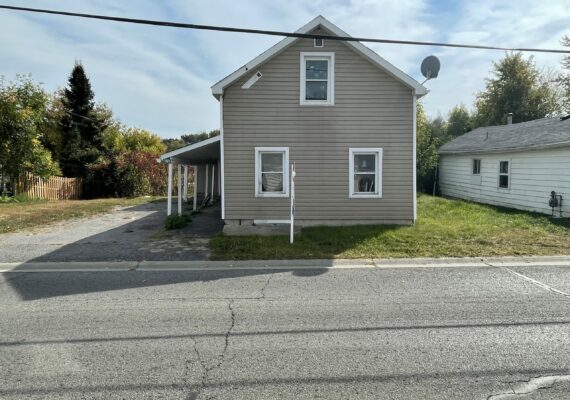Price Adjustments: The Season is Upon Us
We are currently in the short term balanced market, but before long, buyers will have the upper hand.
Due to the shift in the market, homes are sitting on the market longer than they did even a month ago, which is expected given that many buyers have found the homes they were looking for earlier in the year. As a result, there’s less of a demand for the available inventory which creates the perfect climate for price adjustments and we will see them increase in the weeks and months to come.
It comes with a negative stigma for sellers to hear that a price adjustment is recommended. But if the home has been available long enough, it’s time to consider adjusting the list price to gain more visibility from more potential buyers.
An experienced real estate agent or REALTOR® will make it very clear from the beginning that pricing right is the key to selling faster and for more money. But even with all the data at hand, determining the exact price isn’t always easy, especially in a fast-paced market like we have seen over the last few years. There are factors such as comparative active properties, recently sold properties in your area, condition of the property, and current market conditions to take into consideration when pricing a home. Even if the home is priced appropriately, the market could shift quicker than anticipated and a price adjustment may be the next best step.
How do you know your house is overpriced?
Your home is priced much higher than properties in your area
Your Realtor will complete a comparative market analysis of the homes sold in your area in the past 6 months. This is a common method to determine the target price range for your home. Neighbourhood homes are valued relatively close to one another if their size and condition are relatively similar. If you price your home even $50K over the rest, your home may be overlooked. This is a strong sign that a price adjustment is in order.
Infrequent showing requests
The first thing that buyers see when they browse homes for sale besides pictures, is the list price. If that price doesn’t reflect the images of the home and the area, they’re not going to bother to come see it. If you don’t have any requests for showings, you should review your list price and lower it to attract more buyers.
A month goes by without an offer
Due to the inventory levels last winter and spring, many homes sold for over asking in multiple offer situations. If your home has been on the market without any strong offers, it may not be priced correctly. In typical real estate markets, a seller should receive at least one offer within the first few weeks of listing the home. If a month goes by, contact your realtor to discuss an adjustment on the list price.
You hired the agent who recommended the highest price
It’s not necessarily wise to go with the Realtor who said to list your home for the highest number. That could be a sign that they’re not fully understanding the market in your area and that they may underdeliver. Make sure you fully grasp why your Realtor suggests the price that they do by asking them to show you comps in your area that have sold recently and that are currently active on the market. If their price is outlying the comps, you’re risking the loss of a fast and strong sell price.
When should you adjust the price?
If you’re questioning whether it’s time to adjust, then it’s time to adjust. If three to four weeks go by without a strong offer or a decent response to the listing, adjust the price. There’s no sense in delaying the inevitable and the sooner that you attract more buyers, the sooner you’re likely to receive requests for showings and offers.
How much do you adjust the price?
The Pilon Group has been selling homes since 2005 and tracking data to develop an effective model on pricing homes. The Pilon Group Target Pricing Model has been implemented in the selling process since 2007.
Despite an earnest attempt at correctly pricing at the start, adjustments may have to be made on the list price to attract more interested buyers, as previously explained. You’ll see in the graphic below how to determine the level of reduction that needs to be made.
You can see that if you accurately priced your home, you are in the bullseye and receiving strong offers. If not, the areas around the bullseye will tell you roughly how much of an adjustment is recommended.
Get Your Price on Target
- If your home is receiving regular showings but no offers, somewhere between a 1-3% adjustment should be made.
- If you’re receiving a small number of showings and only some drive ups, you probably need somewhere between a 4-7% adjustment.
- Not getting any showings at all is a red flag that at least a 8% adjustment is necessary. When this happens, sellers are usually the most hesitant to adjust because they just cannot believe no one has even come out to see the house.
There are factors and variables involved in a price adjustment that your experienced Realtor will be able to review with you.
Consider the Price Brackets
Along with comps and the Target Pricing Model, price brackets are a helpful tool to use when adjusting the price of your home. Simply put, lowering your price to the next bracket will expose your home to those people searching within that lower level.
Real estate websites set up their property search tools with price brackets. The person searching for a home will select the area, the number of beds, baths and as well, their price range. If your home is currently listed at $475,000, everyone searching for homes in the $500K range will see it, but you’re missing every person searching for homes under $450K.
The limitation with only following the Target Pricing Model is that if you are on the market at $429,000 and you adjust your price by say 5%, you will end up at an adjusted price of $407,550. If that is what the target pricing model calls for you can do it but in this case, it would be a lot smarter to shift down to $400,000 so that you can reach new buyers. Your home will fall into two brackets, the $350K to $400K as well as the $400K to $450K, if they’re in $50K increments. Although you’re listing for $7,550 less, you may receive multiple offers which could develop a bidding war. Bidding wars generally get homes sold for over asking, so you could theoretically make that money up in the end.
To illustrate this scenario we went into MLS and utilized the “Marketing Overview” feature which tells you how many additional matches you will receive from lowering the price.
From the image below, if the current list price of $475,000 was reduced by 5%, the new price would be $451,250. In the red text, you’ll see that by this reduction, the sellers will attract 70 more people. Please also note that the home will remain in its current bracket of $450K to $500K.
From this image below, however, you’ll see that if the current list price of $475K was reduced $1,250 more than that initial 5% reduction, the sellers home would attract almost 400 buyers! For that small amount of money, 323 additional people will be reached than if the reduction was limited strictly to 5% which attracted just 70. Now, this home is in two price brackets, the $400K to $450K as well as the $450K to $500K.
When a listing in MLS has a price change, agents are notified as well as buyers with saved searches that match the home’s criteria. If the listing in this example actually changed their price to $450,000, 393 active buyers would be notified that this home is available to be purchased as well as agents. This is an incredibly effective way to gain interest in a listing that has otherwise sat on the market without much of a response.
Final Thoughts
In the book Zillow Talk by Spencer Rascoff and Stan Humphries Chapter 15 talks about Pricing. One of the points they make is about price adjustments. They say “If you overprice it’s better to admit your mistake and cut the price all the way down to the true market value in one fell swoop.” They are right.
Sellers tend to see a lot of value in their home and lowering the list price can feel as if they are telling people that the home is less valuable. That is an emotional response to a business transaction, and although understandable, it’s not going to achieve the bottom line of selling the home for as much money as possible.
Earlier this year, we discussed how this was a year of change in the Real Estate market. The amount of price adjustments were up and the percentage of price adjustments to homes for sale was up 9 out of the 12 months. This came out to a 14% increase throughout the year.
There are 5 considerations when pricing a home. Exploring comparative sold properties, the market climate when those comps were sold, comparative active properties, the current inventory and the current market. Even if the seller and their experienced agent do their best to price well, it may become evident that an adjustment is in order after a few weeks. Using the target pricing model and revisiting those 5 considerations along with paying attention to the price bracketing will help refocus that target price and get your home sold.
Pilon Real Estate Group Featured Listings: Click here!
We Keep You Covered When You Buy a Home With Our 12 Month Buyer Protection Plan!
Details at: www.HomeBuyerProtectionPlan.ca
Free Home Search With Proprietary MLS Access – New Listings – Faster Updates And More Accurate Data!
Find Homes Now: www.FindOttawaHomesForSale.com
Find Out How We Get Our Sellers More: Click here!
RE/MAX Hallmark ® Pilon Group Realty
www.PilonGroup.com
Email: Info@PilonGroup.com
Direct: 613.909.8100










